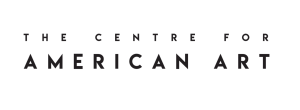Meyer Schapiro (1904-1996) was a dazzling midcentury entrepôt of ideas, bridging the worlds of artists and intellectuals in ways that are truly incomparable. Just as he impressed Noam Chomsky, beseeched Walter Benjamin, and critiqued Martin Heidegger, so too did he mentor Robert Motherwell, assist Barnett Newman, and inspire Fernand Léger. Schapiro’s interstitial position between high art and high academe, however, has made him difficult to understand. Most scholarship about him isolates different aspects or moments of his life—his early Marxism, his forays into psychoanalysis, his relations with practicing artists, or his late semiotics. Stepping back, this workshop seeks to draw inspiration from Schapiro’s very position in an uncertain middle ground.
As a medievalist but modernist, Cold War socialist but Cold War American, documentarian but theoretician, Meyer Schapiro was perpetually, indeed in many ways by definition, in between. Combined with the longevity of his career, the medial nature of Schapiro’s work can serve as a powerful prism for rethinking some of the most consequential historical transitions through which he lived, for instance from modernism to postmodernism, from humanism to neo-liberalism.
At this seminar-style, afternoon workshop. The texts being discussed can be found on this page, below the speaker bios.
The speakers will briefly introduce the texts in short presentations so as to facilitate discussion later in the programme.
Organised by Professor David Peters Corbett (The Courtauld) and Oliver O’Donnell (Warburg Institute, University of London)
Speaker Bios
Hagi Kenaan is a professor of philosophy and Chair of the Philosophy Department at Tel Aviv University. He specializes in twentieth century continental philosophy, in aesthetics and the philosophy of art. He is the author of The Present Personal: Philosophy and the Hidden Face of Language (2005); The Ethics of Visuality: Levinas and the Contemporary Gaze (2013) and Photography and its Shadow (2020). His recent article “Meyer Schapiro’s Restitutions” offers a new reading of the famous “debate” between the art historian and philosopher, Martin Heidegger.
Jérémie Koering is professor of art history at the University of Fribourg. His fields of study are Italian Renaissance Art, epistemology of art history, and anthropology of images. Among other publications, he has published Le prince en représentation (2013), with Stephen J. Campbell, Andrea Mantegna : Making Art History (2015), and, with Yve-Alain Bois, a special issue of October devoted to Meyer Schapiro and Hubert Damisch (2019). He also has recently edited an unpublished manuscript by Robert Klein, L’Esthétique de la technè (2017).
Oliver O’Donnell is a Research Associate at the Warburg Institute, University of London, where he is a member of the Bilderfahrzeuge Project. He is the author of Meyer Schapiro’s Critical Debates: Art Through a Modern American Mind, which won the 2019 Willibald Sauerländer Prize from the Zentralinstitut für Kunstgeschichte. He is also the co-editor of the forthcoming volume, Art History Before English: Negotiating a European Lingua Franca from Vasari to the Present; recent articles have appeared in journals such as History of Humanities, Word & Image, and Tate Papers.
Readings
On Representing and Knowing Schapiro
On Some Problems in the Semiotics of Visual Art
The Still Life as a Personal Object
Meyer Schapiro: Thinking Between Art and the 20th Century | Programme
14:00 – Introductions and Welcome (David Peters Corbett, The Courtauld)
14:05 – Science and Art in Meyer Schapiro’s Early Thought (Oliver O’Donnell, London)
Readings: “Review of Emanuel Loewy’s “The Rendering of Nature in Early Greek Art”/ “Review of The New Viennese School”
14:30 – Discussion
15:00 – Break
15:05 – Drawing, Thinking, and Knowing in Meyer Schapiro (Jérémie Koering, Fribourg)
Readings: “On Some Problems in the Semiotics of Visual Art” / “On Representing and Knowing”
15:30 – Discussion
16:00 – Break
16:05 – Meyer Schapiro on Art and Philosophy (Hagi Kenaan, Tel Aviv)
Readings: “The Still Life as a Personal Object: A Note on Heidegger and Van Gogh” and “Cézanne and the Philosophers”
16:30 – Discussion






